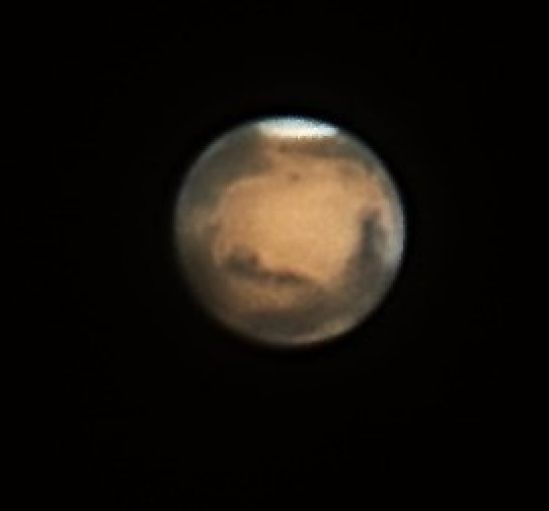Fred Barrett | Nov 04, 2020
We have a meteor shower this month that is one of my favourites. It’s the Leonid shower which has its radiant or source point, near the bright star Regulus in the constellation Leo the Lion. The meteors come from the debris trail of the Comet 55P/Tempel-Tuttle. The Earth will be plowing through these debris bits from about November 6th through to the 30th with a peak number of meteors on the morning of November 17th. We’re in luck with our observing on that night since the Moon will be a very thin faint crescent and allow us to observe the faintest of meteors. As the night progresses and the radiant climbs higher above the horizon, more meteors will streak across the sky with peak viewing time occurring about 3 am to sunrise. The Leonids are fast moving and can leave noticeable, long lasting trails of ionized gas that can be blown into weird shapes by high altitude winds. Hourly rates of more than 15 meteors can be expected.
In early evening, Jupiter and Saturn shine as lovely pair in the south before they set around 11 pm. If you’re up early, Venus and Mercury are eye candy in the east near the bright star Spica at the base of Virgo. A special sight on the 13th is Mercury near the horizon below the thin crescent Moon, and Venus, very bright, above the crescent.
Mars is now getting more distant from us as the Earth moves away from it in its faster inner orbit but it’s still eminently viewable for a few weeks. Sadly the computer that controls my telescope and especially the software that controls a special camera that allows me to obtain close up images of Mars, is still in the process of being reinstalled on a new (previously enjoyed, uh, I mean used. Hey, I’m not rich) computer. I will have to wait another 2 years for an opportunity to image Mars. Oh well, there’s still lots of stuff up there to observe and image when my jigsaw puzzle of stuff is back together again.
Highlights:
November 1: Daylight savings ends. Forgot eh? You’re an hour ahead of the rest of the world, who didn’t!
November 8: Last quarter Moon.
November 13: The thin crescent Moon passes close to Venus and Mercury.
November 14: The Moon is at perigee -355,760 Kilometres.
November 15: New Moon.
November 17: Leonid meteor shower is at its peak.
November 21: First quarter Moon.
November 26: The Moon is at apogee – 403,540 kilometres.
November 29: My Birthday: A celestial event.
November 30: Full Moon. This Moon is the Full Beaver Moon. Beavers head for their lodges signaling humans to retreat to their lodges or head south to warmer climes. Whoops, not this year for the snowbirds.
Remember, it’s always a great month for looking up!
“The Beginner’s Observing Guide by Leo Enright is an invaluable companion for adventures in the sky. It also contains useful star charts. It can be ordered from the Royal Astronomical Society of Canada at www.rasc.ca/publications. A subscription to our very own excellent Canadian astronomy magazine “SkyNews” can be arranged at the RASC website as well.
Let me know how your observing has gone this month especially if you saw anything unusual. I got a few emails last month reporting meteor sightings and also strange satellites flying in formation across the sky. Check the SpaceX website for an answer about the satellites. I enjoy the feedback. If you have any questions or suggestions you can contact me through this paper or email me at This email address is being protected from spambots. You need JavaScript enabled to view it. .
Clear Skies! Fred.
More Stories
- No Winner Yet in Catch The Ace But Fundraising Target Met
- South Frontenac Food Bank Opens Second Location in Battersea
- Sharbot Lake Pentecostal Church Anniversary - 1925-2025
- Frontenac Holistic Health Fair - September 20 At Storrington Centre
- Odd Year For Real Estate - But Sales Are Steady Year Over Year
- 193rd Kingston Fall Fair
- Kim Phuc - the Napalm Girl - To Visit Flinton In November
- South Frontenac Council - September 2
- Sticker Shock - EV Charging Station To Cost North Frontenac Township
- 30th Anniversary Verona Car Show

